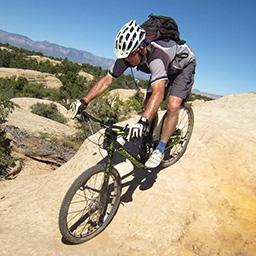Get Moving: physical activity and exercise
Staying active can help lower your risk of recurrence and lead to longer survival.
Exercise is so important, we recommend cancer survivors try to return to their normal levels of physical activity as soon as possible after diagnosis.
Just 30 minutes of moderate activity a day can:
- Reduce the risk of recurrence or developing cancer
- Improve physical functioning
- Reduce anxiety and depression
- Improve mood, self-esteem and body image
- Reduce fatigue, nausea and pain
- Help maintain a healthy body weight
- Improve overall quality of life
Adults should aim for at least 150 minutes of moderate physical activity or 75 minutes of vigorous physical activity per week, or an equivalent combination, according to the 2008 Activity Guidelines for Americans.
For cancer survivors who are inactive or just starting a physical activity program, even a small increase can be beneficial. If you don’t exercise regularly, start slowly and gradually increase your duration and intensity.
For those already physically active, increasing activity can still benefit your health. In fact, exceeding 300 minutes of moderate physical activity or 150 minutes of vigorous physical activity a week can provide even greater protection against developing cancer.
We also recommend cancer survivors try strength training exercises at least two days per week.
You should always consult with your providers before beginning a vigorous physical activity program. Ask your doctor about a consultation with our rehabilitation team.
Regardless of how much physical activity you get, staying sedentary for long periods can negatively impact your health and increase your risk of developing cancer.
Reduce sedentary behavior by:
- Using the stairs
- Limiting TV and screen time
- Stretching or jogging in place during commercial breaks
- Using a stationary bicycle or treadmill when watching TV
- Walking or biking to your destination
- Parking at the far corner of the parking lot and walking
- Using your lunch break to exercise with co-workers, family or friends
- Taking short exercise breaks to stretch or go for a quick walk
Exercise
Moderate intensity activities
Walking, dancing, leisurely bicycling, ice and roller skating, horseback riding, canoeing, yoga
Vigorous intensity activities
Jogging or running, fast bicycling, circuit weight training, swimming, jumping rope, aerobic dance, martial arts
Sports
Moderate intensity activities
Downhill skiing, golfing, volleyball, softball, baseball, badminton, doubles tennis
Vigorous intensity activities
Cross-country skiing, soccer, field or ice hockey, lacrosse, singles tennis, racquetball, basketball
At home
Moderate intensity activities
Mowing the lawn, gardening
Vigorous intensity activities
Digging, carrying and hauling, masonry, carpentry
On the job
Moderate intensity activities
Walking and lifting as part of the job (e.g., custodial work, farming, auto or machine repair)
Vigorous intensity activities
Heavy manual labor (e.g., forestry, construction, firefighting)
